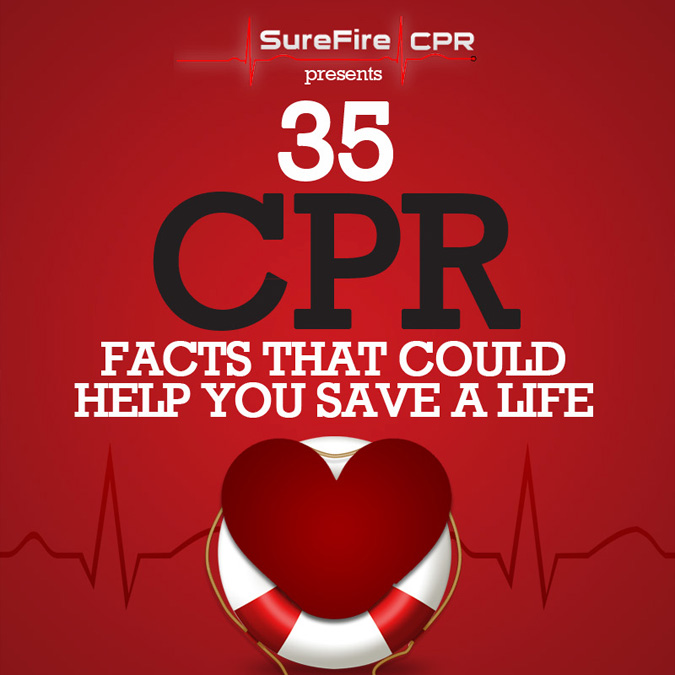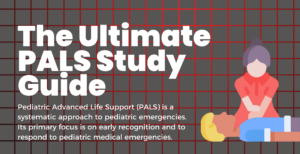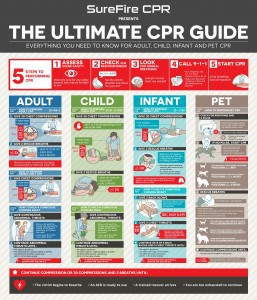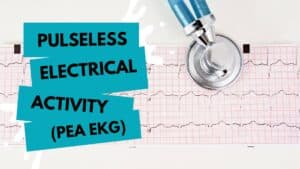So, you think you know CPR because you attended a training session as part of an employee induction program five or ten years ago. According to new CPR research statistics released today by SureFire CPR, what little you may remember of that session is now probably out of date. Not only are CPR guidelines updated every five years, people who seek training for CPR certification forget learned skills as early as three months after they have been trained. These are just two of the 35 new statistics for homes and businesses to consider.
35 CPR Statistics and Facts
Click CPR Image to Enlarge

1. The Guinness World Record for the longest CPR Marathon performed is 151 hours (2 teams of 2 people in 2004).
2. 15 minutes of CPR training will burn an average of 165 calories.
3. CPR was first started in 1740 and see more research paper examples.
4. 88% of cardiac arrests happen in the home.
5. Both compressions and breaths are very important in drowning, choking, drug overdoses, and pediatric CPR.
6. Only 32% of people in cardiac arrest get CPR from a bystander.
7. If you perform CPR, you can triple the person’s chance of survival.
8. Accidental injuries, including choking and drowning, are the number 1 cause of death in children.
9. Compressions should be performed at a rate of 100 per minute (to the beat of Stayin’ Alive).
10. Breaths should be given over 1 second with enough air to see the chest rise.
11. If someone is in cardiac arrest, CPR can only make the situation better.
12. It is normal to break ribs when doing compressions.
13. Many AEDs (Automated External Defibrillators) will talk you through how to perform CPR with the press of a button.
14. 383,000 people suffer from cardiac arrest each year.
15. AEDs are available for home use without a prescription.
16. Infant CPR is performed by using 2 fingers and pushing down 1/3 – ½ the depth of the chest.
17. Children as young as 9 have saved the lives of others with CPR.
18. Becoming certified to save a life can be done in less time than a long movie.
19. CPR Guidelines are updated every 5 years.
20. Heart Disease is the number 1 killer of Americans.
21. Heart attack symptoms for women and diabetics are usually different from men.
22. The more people standing around during an emergency, the less likely someone is to act.
23. CPR certification is valid for 2 years, but skills are forgotten as early as 3 months after training.
24. For every minute that someone is unconscious and not breathing without CPR, they have a 10% less chance of survival.
25. Child CPR is performed using one or two hands and compressing 1/3 – ½ the depth of the chest
26. CPR classes are different for those in healthcare and those in non-healthcare fields.
27. Many proactive high schools are requiring CPR certification prior to graduation.
28. The longest successful CPR save is 96 minutes long!
29. The compression to ventilation ratio is 30 compressions to 2 breaths.
30. CPR breathing barriers are so small that you can carry them on a keychain
31. With widespread access to AEDs at least 40,000 lives would be saved each year.
32. CPR is given to people who are unconscious and not breathing normally.
33. CPR Certification can be obtained in class, online, or a combination of the two.
34. When compressing the chest of an adult, push down at least 2”.
35. The life you save with CPR will most likely be someone you love.
References: American Heart Association, JEMS











